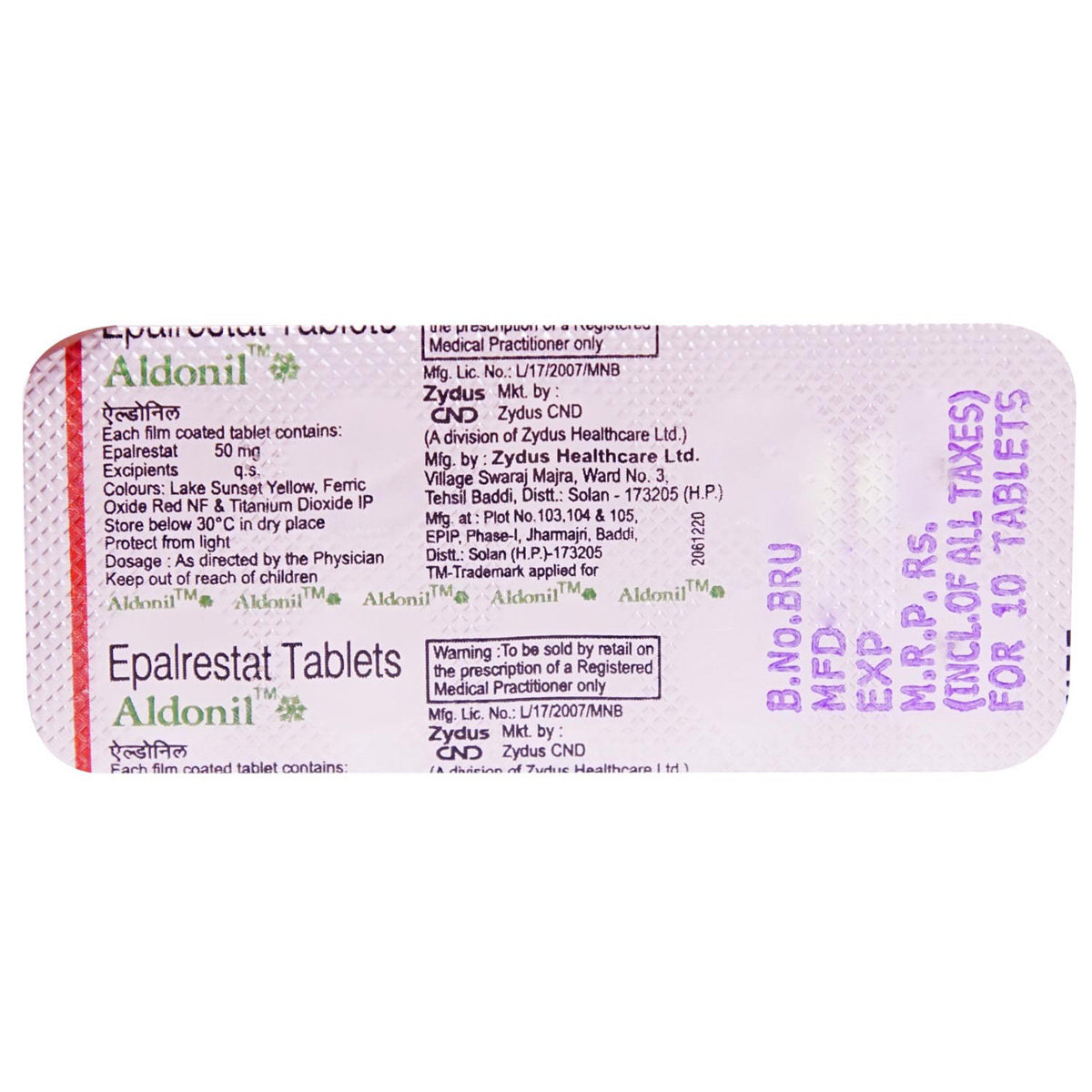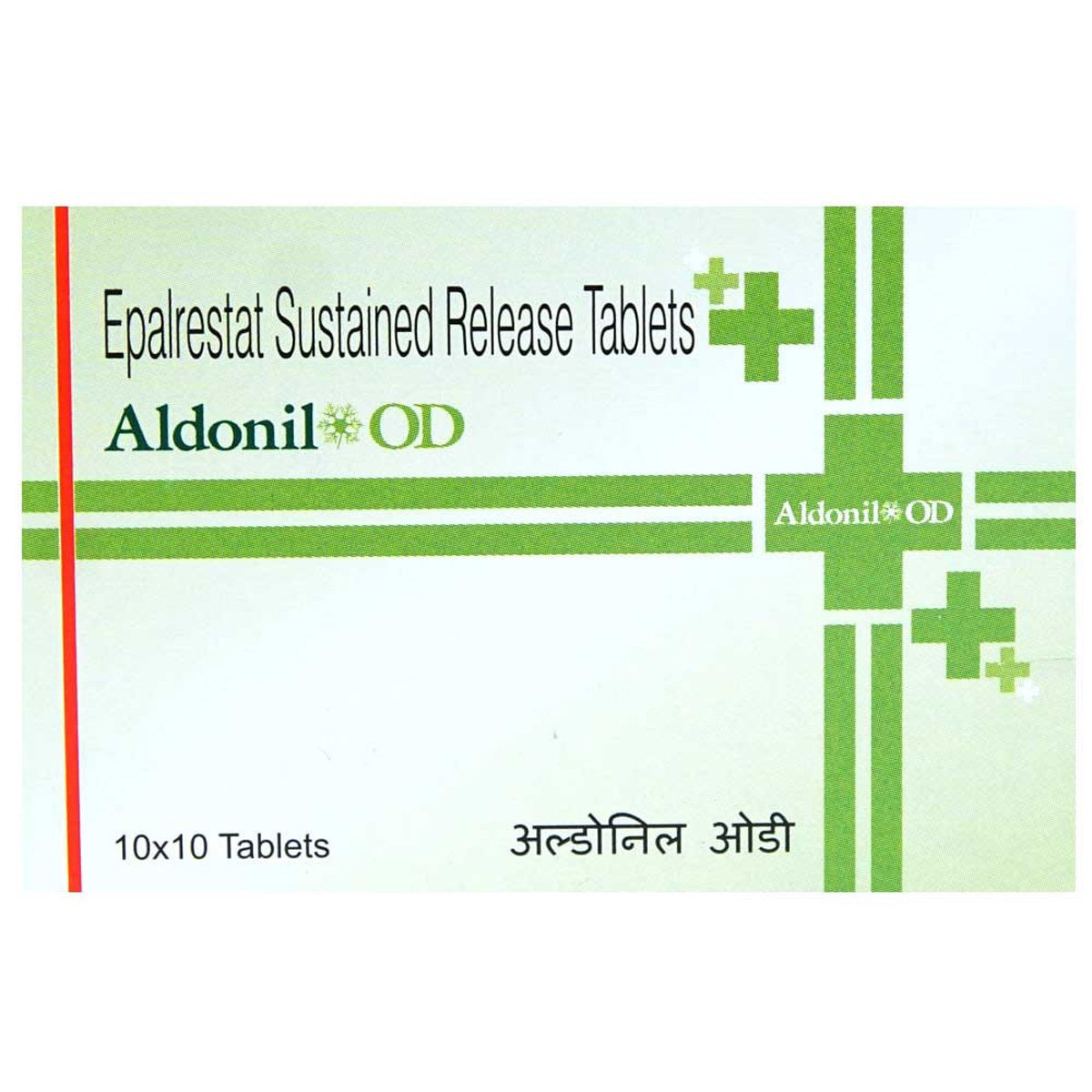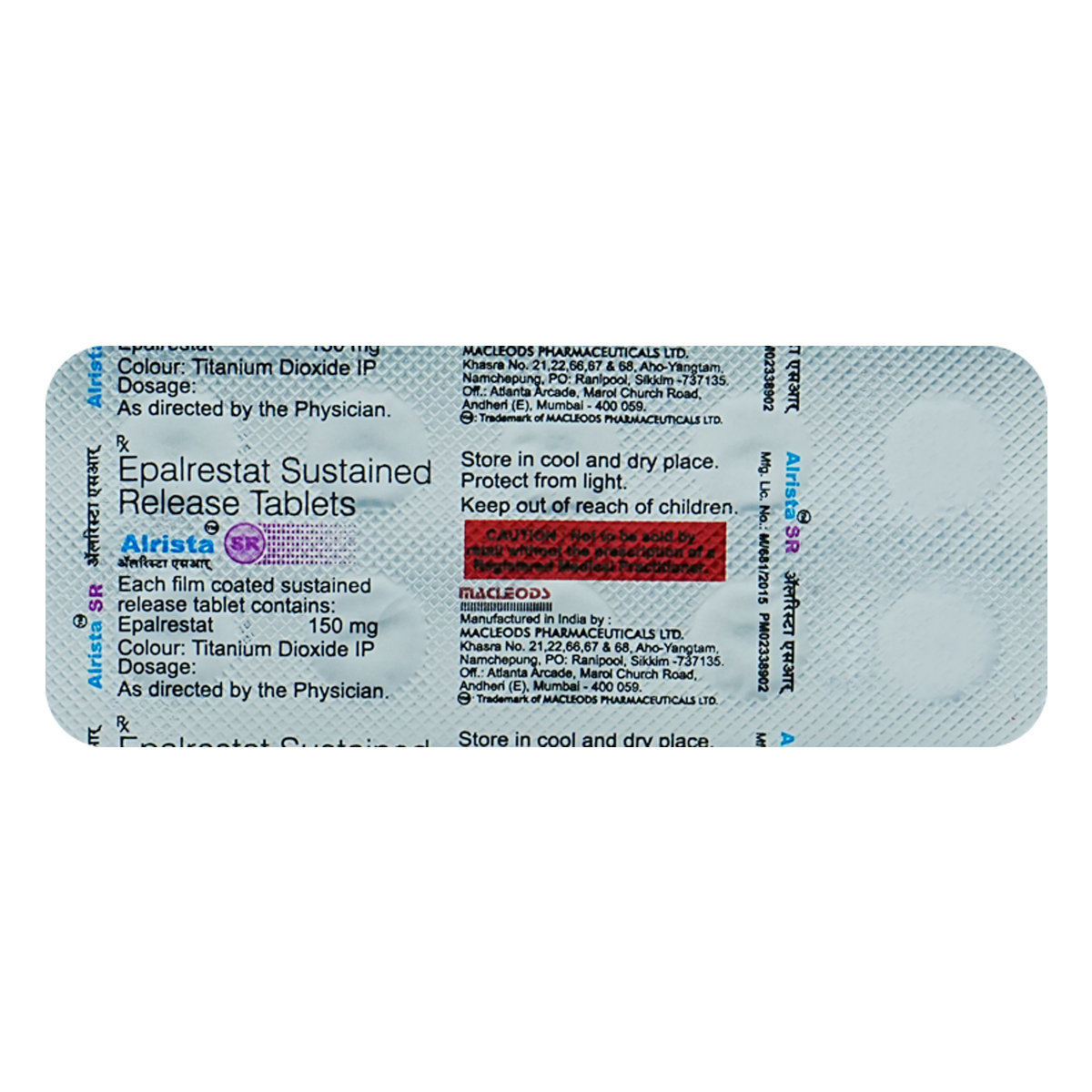Epalrestat
About Epalrestat
Epalrestat belongs to a group of medicines called aldose reductase inhibitors used to manage diabetic neuropathy. Diabetic neuropathy is a chronic progressive nerve disease which causes nerve pain due to nerve damage in diabetic patients. It mostly affects the legs and feet.
Epalrestat contains ‘Epalrestat’ that works by inhibiting aldose reductase enzyme, which catalyses the conversion of glucose to sorbitol. Accumulation of sorbitol occurs due to hyperglycaemia in patients who have diabetes which leads to nerve pain. Epalrestat prevents the accumulation of sorbitol, thereby helps in treating diabetic neuropathy.
You are advised to take Epalrestat for as long as your doctor has prescribed it for you depending on your medical condition. In some cases, you may experience certain common side-effects such as nausea, vomiting, diarrhoea, dizziness, and headache. Most of these side-effects do not require medical attention and will resolve gradually over time. However, you are advised to talk to your doctor if you experience these side-effects persistently.
Consult your doctor before taking Epalrestat if you are pregnant or breastfeeding. Epalrestat may cause drowsiness and dizziness, so drive only if you are alert. Epalrestat is not recommended for children as safety and effectiveness have not been established. Avoid consuming alcohol with Epalrestat as it could lead to increased drowsiness and dizziness. Keep your doctor informed about your health condition and medicines to rule out any side-effects.
Uses of Epalrestat
Medicinal Benefits
Epalrestat belongs to a group of medicines called aldose reductase inhibitors. Epalrestat is used for the management of diabetic neuropathy. Epalrestat works by inhibiting the aldose reductase enzyme, which catalyses the conversion of glucose to sorbitol. Accumulation of sorbitol occurs due to hyperglycaemia in patients who have diabetes which leads to nerve pain. Epalrestat prevents sorbitol accumulation, thereby treating diabetic neuropathy (pain due to nerve damage).
Directions for Use
Storage
Side Effects of Epalrestat
- Dizziness
- Nausea
- Vomiting
- Headache
- Diarrhoea
Drug Warnings
Do not take Epalrestat if you are allergic to any of its contents. Inform your doctor if you have liver or kidney problems. Consult your doctor before taking Epalrestat if you are pregnant or breastfeeding. Epalrestat may cause drowsiness and dizziness, so drive only if you are alert. Epalrestat is not recommended for children as safety and effectiveness have not been established. Avoid consuming alcohol with Epalrestat as it could lead to increased drowsiness and sleepiness.
Drug Interactions
Drug-Drug Interactions: No interactions found/established.
Drug-Food Interactions: No interactions found/established.
Drug-Disease Interactions: No interactions found/established.
Drug-Drug Interactions Checker List:
Safety Advice

Alcohol
unsafeAvoid consumption of alcohol while taking Epalrestat as it may cause increased dizziness.

Pregnancy
cautionLimited information is available regarding the use of Epalrestat in pregnant women. Please consult your doctor if you have any concerns regarding this, your doctor will prescribe only if the benefits outweigh the risks.

Breast Feeding
cautionLimited information is available regarding the use of Epalrestat in breastfeeding women. Consult your doctor before taking Epalrestat; your doctor will decide whether Epalrestat can be taken by breastfeeding mothers or not.

Driving
cautionEpalrestat may cause dizziness. Do not drive or operate machinery unless you are alert.

Liver
cautionEpalrestat should not be used in patients with severe liver disease. Please consult your doctor if you have a liver impairment or any concerns regarding this.

Kidney
cautionEpalrestat should be used with caution in patients with kidney impairment. Please consult your doctor if you have kidney impairment or any concerns regarding this.

Children
cautionEpalrestat should not be given to children as safety and efficacy have not been established.
Habit Forming
Diet & Lifestyle Advise
- Include food rich in vitamin B and D in your diet.
- Include cayenne pepper in your diet as it can help lower neuropathic pain.
- Exercising regularly helps in improving overall health and combating pain.
- Rest well, get plenty of sleep.
- Try taking a warm bath as it can be soothing.
- Avoid smoking and alcohol consumption.
- Meditation and yoga can help lower stress, decrease pain sensitivity and improve coping skills.
- Acupuncture can be helpful by stimulating pressure points.
- Using essential oils for massages can help increase circulation.
Patients Concern
Disease/Condition Glossary
Diabetic neuropathy: Diabetic neuropathy is a condition in which nerve damage occurs due to high blood glucose levels. It mostly damages the nerves in the legs and feet. Diabetic neuropathic pain is common in patients with type1 and type2 diabetes, which usually develops slowly. If you have diabetes and experience numbness, pain, tingling sensation, or weakness in the hands or legs, you must consult a doctor. The pain could be intermittent or continuous, which is felt as a prickling, stabbing, tingling or burning sensation. Symptoms include spontaneous, untriggered pain, unpleasant feeling, shooting, burning or stabbing pain, difficulty with coordination when walking, difficulty resting or sleeping, and evoked pain (pain caused by events usually not painful).
FAQs
Epalrestat works by inhibiting aldose reductase enzyme which catalyses the conversion of glucose to sorbitol. Epalrestat prevents the accumulation of sorbitol, thereby helps in treating diabetic neuropathy.
Diarrhoea could be a side-effect of Epalrestat. Drink plenty of fluids to prevent dehydration and consume non-spicy meals if you experience diarrhoea. Consult your doctor if you have severe diarrhoea.
Epalrestat might cause high blood pressure. So, if you have hypertension, consult your doctor before taking Epalrestat. Regularly monitor blood pressure levels while taking Epalrestat.
Do not discontinue Epalrestat without consulting your doctor. To treat your condition effectually, continue taking Epalrestat for as long as prescribed. Do not be reluctant to speak with your doctor if you feel any difficulty while taking Epalrestat.
Epalrestat may cause peripheral oedema. Peripheral oedema is the swelling of the hands and lower legs. Avoid sitting or standing for too long. Raise your legs by putting a pillow under the legs while lying down.







